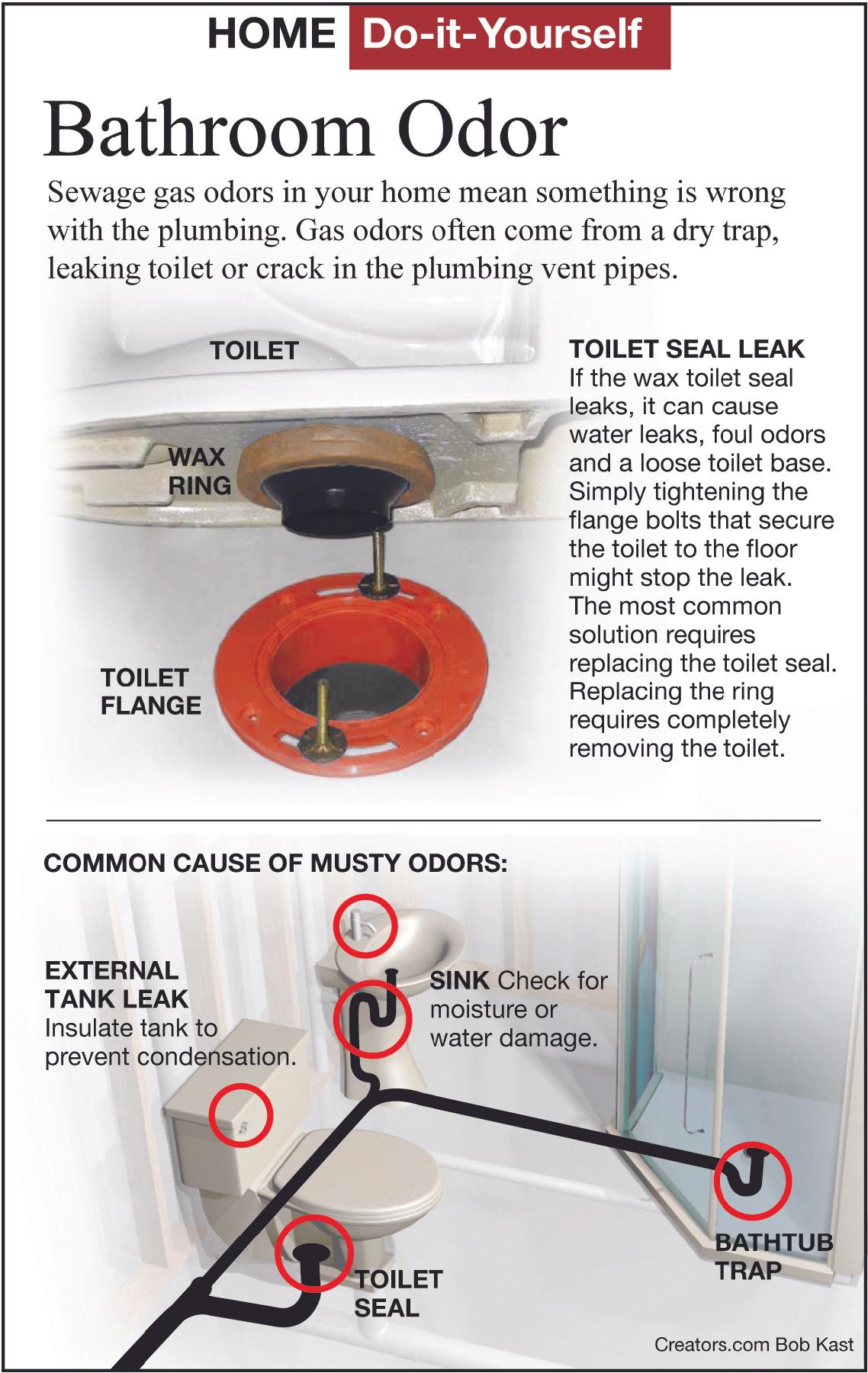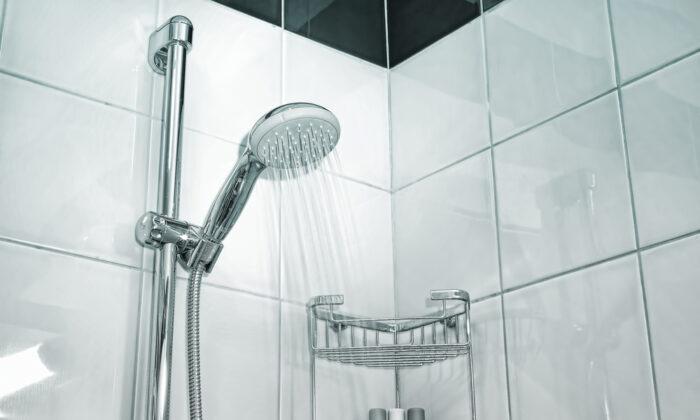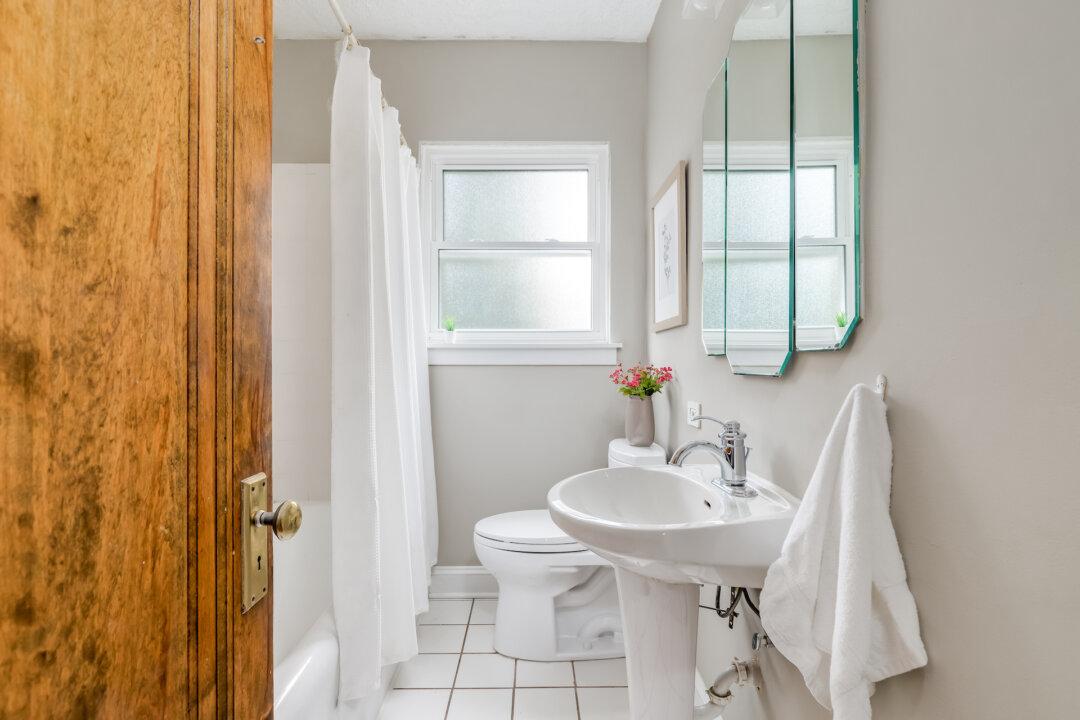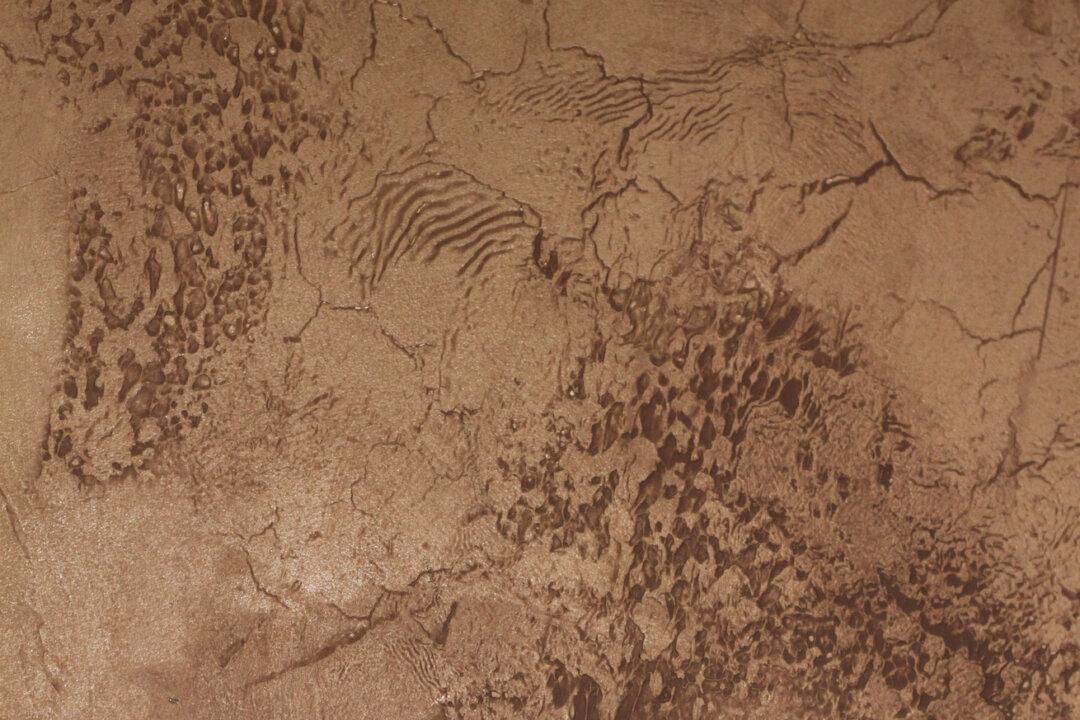Persistent dampness is the most common cause of the mildew and musty odors. In order for mildew to live indoors, it must have sources of moisture and organic material for nutrition. Soaps, especially natural soaps, and oils and dead skin cells from your body provide the food source. Always rinse off the shower walls after bathing.
A musty, moldy odor is usually caused by persistent dampness in a specific area or two in the bathroom. For mold and mildew to thrive in a bathroom, they just need moisture and some organic source for nutrition. This source can be flake of dead skin from your body, soap residue, oils for conditioners, etc.
Since there also is a sewer gas odor at times, there may be a leaky wax ring under the toilet. This soft wax ring creates the seal between the toilet drain outlet and the sewage drain inlet pipe when the toilet is bolted down. If the toilet is slightly loose and you can rock it, this motion may deform the wax ring and cause a leak.
When the wax ring is leaky, it allows water and some wastes to leak out on the floor. Often, the leakage stays under the toilet and you never see it, but it saturates the lumber below it. If you can rock your toilet, replace the wax ring. It is a very inexpensive part you can find at any hardware store.
If the sewer gas odor is coming from a bathroom that is seldom used, the sink or bathtub trap may have dried out. The trap elbow should have water standing in it to create a water seal to block sewer gases. For seldom used bathrooms, to be safe, pour a quart or so of water in the drains to fill the trap elbow.
Next, check for leaks in the vanity cabinet underneath the sink. Water may be leaking there without your noticing it. Deposits of soap, hair, and other gunk collect in the bottom of the trap under the sink. If the plumbing starts to leak, this is a common spot. Also the seal where the sink stopper control arm enters the drain under the sink may have become leaky. You can buy replacement trap sections and stopper arm seals.
The trap in the bathtub is another possible area where water may be leaking, causing persistent dampness and a musty odor. Unfortunately, this is much more difficult to repair. Check the ceiling in the area immediately beneath the bathtub. You may notice a slight discoloration and a spongy feel to the ceiling drywall. It may also feel colder than other spots on the ceiling.
The musty odor may also be coming from the bathroom ceiling vent fan. If the fan duct outlet is located inside the wall or roof, rain water may be leaking in. This can run down the duct and sometimes collect around the ceiling fixture. Remove the decorative cover from around the vent fan, and check for any signs of moisture.






Friends Read Free